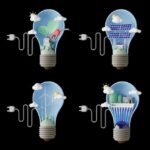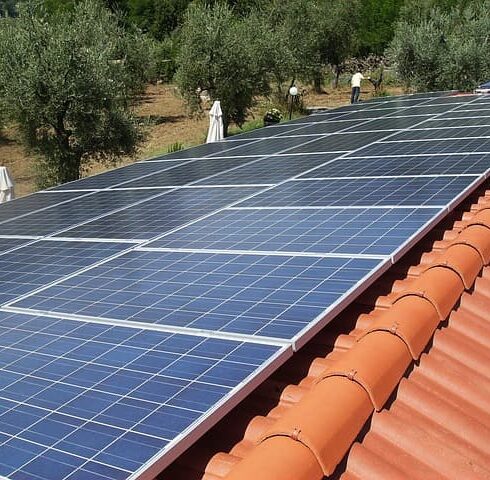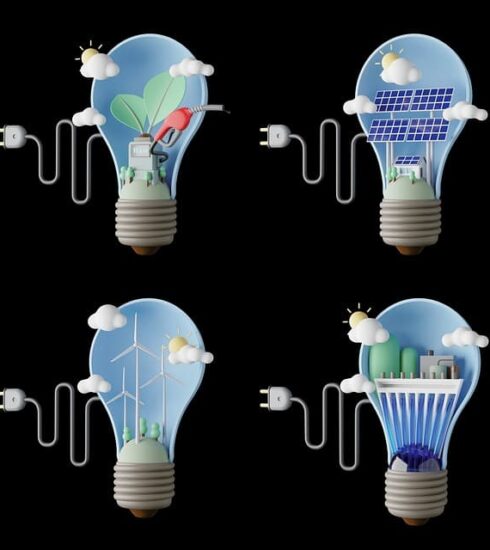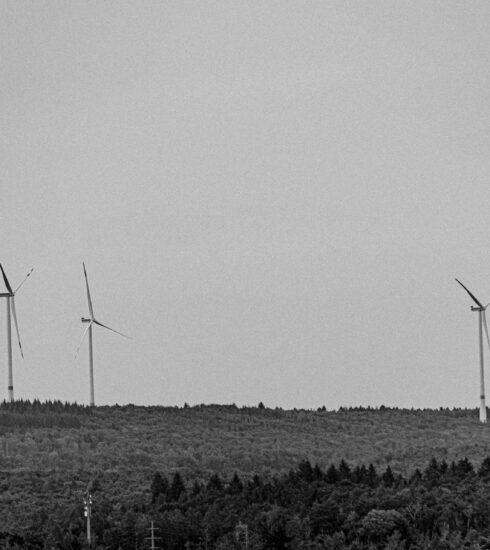What is Renewable Energy?
Renewable energy is energy derived from natural sources that are replenished at a rate faster than they are consumed. Examples of such constantly replenished sources are sunlight and wind. Renewable sources can provide enormous amounts of energy and are all around us.
In contrast, fossil fuels-coal, oil, and gas-are non-renewable resources that take hundreds of millions of years to form. Burning fossil fuels to produce energy releases harmful greenhouse gases such as carbon dioxide.
Generating energy from renewable sources has far fewer emissions than burning fossil fuels. Shifting from fossil fuels, which currently account for the lion’s share of emissions, to renewable energy sources is key to overcoming the climate crisis.
Today, renewable energy is a cheaper alternative in most countries and creates three times as many jobs as fossil fuels.
Below are a few common renewable energy sources:
SOLAR ENERGY
Solar energy is the richest of all energy resources and can be used even in cloudy weather. The rate at which solar energy is captured by the earth is about 10,000 times the rate at which humanity consumes energy.
Solar technologies can provide heat, cooling, natural light, electricity, and fuel for a multitude of applications. These technologies convert sunlight into electrical energy using photovoltaic panels or mirrors that concentrate the sun’s radiation.
Although not all countries are equally endowed with solar energy, each can make a significant contribution to the energy balance from the sun’s energy per se.
In the last decade, the cost of manufacturing solar panels has dropped dramatically, making them not only affordable, but often the cheapest way to generate electricity. Solar panels have a lifespan of about 30 years and come in a variety of shades depending on the type of material used in their production.
WIND ENERGY
Wind power harnesses the kinetic energy of moving air using large wind turbines located on land (onshore wind farms) or in sea or fresh water (offshore/coastal wind farms). Wind energy has been used for thousands of years, but onshore and offshore wind energy technologies have evolved over the past few years to maximize the amount of electricity produced by taller turbines and larger diameter rotating parts.
Although average wind speeds vary greatly from location to location, the global technical potential for wind power is greater than the world’s electricity production, and most regions of the world have enough capacity to build a significant number of wind farms.
Strong winds occur in many regions of the world, but sometimes remote areas are most suitable for wind power generation. Offshore wind energy has enormous potential.
GEOTHERMAL ENERGY
Geothermal energy harnesses the available thermal energy of the Earth’s interior. Heat is obtained from geothermal reservoirs by drilling wells or other means.
Reservoirs that are inherently hot and permeable are called hydrothermal reservoirs, and reservoirs that are hot enough to be enhanced by hydraulic stimulation are called enhanced geothermal systems.
Fluids of different temperatures on the surface can be used to generate electricity. The technology for generating electricity from hydrothermal reservoirs is proven and reliable and has been used for over 100 years.
HYDROENERGY
Hydropower uses the energy of water moving from a higher elevation to a lower elevation. Such energy can be generated by reservoirs and rivers. Hydropower plants in reservoirs use the water they hold, while in-stream hydropower plants use the energy of available river runoff.
Hydropower reservoirs often serve several purposes, providing drinking and irrigation water, the ability to deal with floods and droughts, navigation services, and energy supplies.
Hydropower is currently the largest source of renewable energy in the electric power sector. It depends on generally stable rainfall distribution regimes and can be adversely affected by climate-induced droughts or changes in ecosystems that affect such regimes.
The infrastructure required to generate hydropower can also have adverse impacts on ecosystems. For this reason, many consider small hydropower plants to be a greener option, especially suitable for populations in remote areas.
OCEAN ENERGY
Technologies based on using the kinetic and thermal energy of seawater – such as waves or currents – to generate electricity or heat are used to generate ocean energy.
Ocean energy systems are still in the early stages of development; a number of prototype devices using waves and tidal currents are currently being tested. Theoretically, ocean energy could easily exceed current human energy needs.
BIOENERGY
Bioenergy comes from a variety of organic materials called biomass, such as wood, charcoal, manure, and other organic fertilizers used to produce heat and electricity, and crops used to produce liquid biofuels. Most biomass is used in rural areas for cooking, lighting, and space heating, and its main consumers tend to be poorer people in developing countries.
Modern biomass systems include special crops or trees, residues from agriculture and forestry, and various organic waste streams.
Energy produced by burning biomass produces greenhouse gas emissions, but at a lower rate than fossil fuels such as coal, oil, or gas. However, bioenergy should be used only for limited purposes, given the potential negative environmental impacts associated with the large-scale increase in forest and bioenergy plantations and the resulting deforestation and land-use changes.





